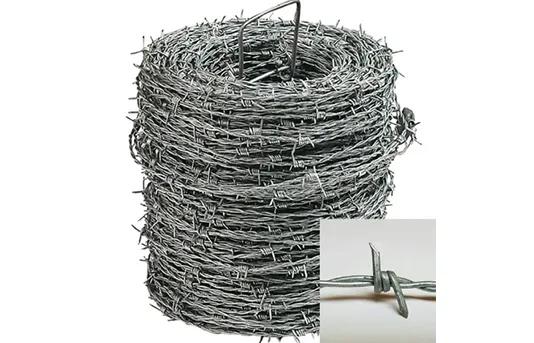-
 Phone:
Phone: -
 Email:
Email:

razor wire and barbed wire
The Significance of Razor Wire and Barbed Wire in Security
Razor wire and barbed wire have long been synonymous with security and defense. These intricate barriers, with their sharp edges and imposing structures, serve as effective deterrents against intruders and trespassers. In this article, we will explore their characteristics, applications, and the roles they play in enhancing safety around the world.
Razor wire, often confused with its cousin barbed wire, is distinct in its design and utility. Composed of thin, sharp blades that are placed at intervals along a wire strand, razor wire is designed to inflict serious injury upon anyone attempting to breach the barrier. The design typically allows it to be coiled tightly, making it an efficient and space-saving option for security installations. In contrast, barbed wire features protruding barbs at regular intervals along its strand, which, while still hazardous, is less menacing than its razor counterpart.
One of the primary advantages of both razor wire and barbed wire is their psychological impact. The very sight of these intimidating barriers can dissuade potential trespassers from approaching property. In many cases, the mere presence of such fencing is enough to convince individuals that attempting to breach the perimeter would be a futile and dangerous endeavor. This psychological deterrent can be particularly useful for businesses, military installations, and correctional facilities.
Razor wire is frequently employed in high-security areas such as military bases, prisons, and warehouses storing valuable goods. Its design makes it difficult to climb or cut through, adding an extra layer of protection to sensitive sites. Authorities often utilize this type of fencing in conjunction with surveillance systems, lighting, and other security measures to create a formidable defense against unauthorized access.
razor wire and barbed wire

Barbed wire, on the other hand, has a broader range of applications. While it is also widely used in correctional facilities and military operations, it finds its place in agriculture and livestock management as well. Farmers use barbed wire to contain livestock and protect their properties from wildlife or other intruding animals. Its effectiveness in marking boundaries makes it an essential tool for ranchers and landowners.
In addition to their protective qualities, both razor wire and barbed wire are cost-effective solutions for security needs
. Installing these types of fencing is generally less expensive than other high-tech security systems, making them accessible for various properties ranging from homes to industrial sites. Their durability and low maintenance requirements further enhance their appeal, ensuring long-term protection with minimal upkeep.However, the use of razor wire and barbed wire does not come without controversy. Critics argue that these fencing materials can pose risks to both humans and animals and can lead to severe injuries or fatalities. Additionally, in urban areas, such applications can contribute to the perception of fear and hostility rather than safety. As a result, some communities are debating alternative security measures that offer protection while maintaining a welcoming environment.
In conclusion, razor wire and barbed wire represent essential tools in the realm of security and protection. Their unique designs provide both physical deterrence and psychological barriers against unauthorized access. While they remain invaluable in various sectors, including agriculture and high-security environments, it is crucial to consider the broader implications of their use. Balancing security needs with a commitment to safety and community well-being will be key as we navigate the evolving landscape of security solutions in the future.
-
Wire Mesh for Every Need: A Practical SolutionNewsJul.25,2025
-
Steel Fences: Durable, Secure, and Stylish OptionsNewsJul.25,2025
-
Roll Top Fencing: A Smart Solution for Safety and SecurityNewsJul.25,2025
-
Cattle Farm Fencing Solutions for Maximum SecurityNewsJul.25,2025
-
Affordable Iron Binding Wire SolutionsNewsJul.25,2025
-
Affordable Galvanized Wire SolutionsNewsJul.25,2025
-
Wire Hanger Recycling IdeasNewsJul.25,2025








